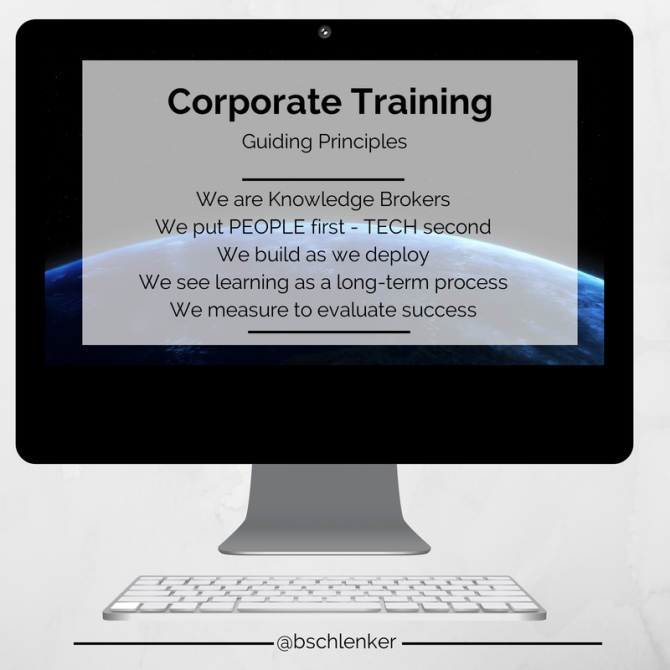Top 5 Corporate Training Department Guiding Principles
Does your training department have a list of guiding principles? If not, then you can have mine. Well, at least it’s a place to start. You may end up with something different, but it will get you and your team thinking.
Sometimes documenting high level thoughts, ideas, or principles, can feel like a waste of time. I’ve been in more than one company spending way TOO much time trying to get the wording just right. And then at the end of it, once the final draft is approved by everyone, it’s never talked about again.
Yes, I was one of those people early on in my career that could not see the value in the exercise. But, like any other tool, you need to figure out how to use it within your own context of work. If you are a learning leader you should refer back to your guiding principles often.
I think the most important purpose of listing your principles is to improve communication within the company. Anyone new to the company can very quickly know quite a lot about who you are, and how you run your training department by simply reading your principles and understanding your values, and goals. Let’s take a look at these a little more closely.
In my personal corporate training slide deck I also have a sentence or two defining more clearly what these principles mean. I’ve listed those as well below.
We are knowledge brokers.
We build expertise in those who need it, by leveraging those who have it.
This is a big deal for me. After 20+ in the learning industry, in one way or another, the real business value comes from being the middle man. The training department is our home within the organization, and with that comes certain expectations, but overall nothing is more important than simply helping people do their job better by connecting them with knowledgeable peers and/or convincing the knowledgeable ones to share their expertise.
We put People first–Technology second.
We recognize the best training is often 1:1, but that doesn’t scale. We strategically use technology to amplify, and efficiently scale up, the human element of training.
This is an extension of the first, but no less important. Technology is cool but sometimes our use of learning technologies can get in the way of simply being an effective knowledge broker. Sometimes two people just need to meet. In some cases a simple paper checklist can solve a business problem. The idea is that we should be more interested in supporting people, and less consumed by what technology we want to use.
We build as we deploy.
At the speed of business, we iteratively develop scalable solutions while meeting current and immediate training needs.
This is something that has only recently been seen as an acceptable practice. I’ve written several posts about delivering a minimum viable training product and then evaluating it and then quickly adapt it based on your findings. And then to continue this process as often as the solution is needed. This is painful for many in the learning industry to accept, but I can assure you that the business LOVES it.
We see learning as a long-term process.
We believe training events are only a part of the journey towards expertise. We leverage multiple content delivery channels to make content more readily available on demand in real-time.
This extends the previous item, “We build as we deploy”. Since we know that our brains required a long period of repeated exposure at certain intervals, it’s more important that we create learning processes than learning products. To be clear, we still create learning products. They are just developed differently and iteratively developed and delivered over time to our learners.
We measure to evaluate success.
We ensure the effectiveness of training solutions by linking desired outcomes to business performance indicators, and tracking and evaluating results.
And last but certainly not least, we must prove that we are having a positive impact on the business. In some cases butts in seats is a valuable metric to know, and adds business value. Other cases require us to measure successful business practices and make connections to sales. There is a lot to choose from. The idea here is that whatever we decide to measure, it’s important to someone in the business and seen as a valuable addition to the business…and you can prove it.
What do you think? Did I miss anything? Can your current training team hold up under these principles?
I’d love to hear your feedback. And remember, you are welcome to use these with your team. Let me know if they are helpful to you.






